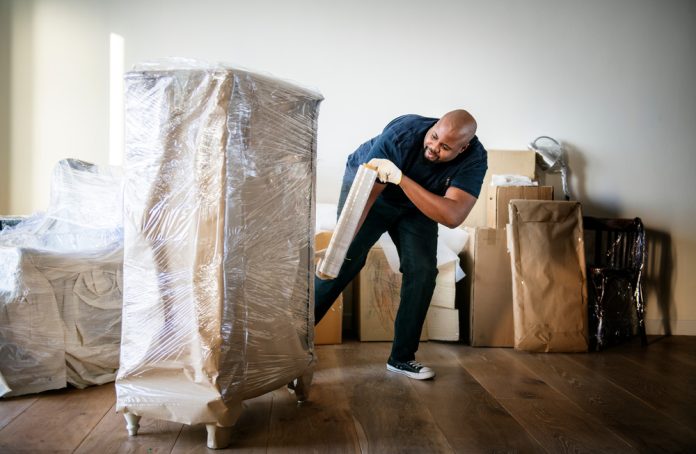Moving can be challenging for most people. Without a systematic process and careful planning, it can mentally, physically, or emotionally exhaust you. Suppose you’re planning to relocate anytime soon. In this case, you may need some moving hacks to achieve the smoothest house move.
Knowing and applying some tips and tricks can help make the process more manageable and stress-free, allowing you to transfer to your new place while making the most of your time, resources, and effort. That said, below is a list of moving hacks that you can consider.
- Hire Movers
Packing by yourself is an option for moving, but, as mentioned earlier, it can be tiring in most cases, especially if you’re wrapping fixtures and furniture. That said, hiring movers is an excellent alternative for this. If you’re hiring a moving company or searching for ‘movers in my area‘ on the web, it’s best to consider one that offers various services, such as packing and unpacking.
Companies that offer different services help their customers save time, money, and effort, assisting them in making a smooth move. Apart from the services, you should also think of the company’s area of operations. The broader the scope of its delivery is, the better.
- Create A Checklist
A moving checklist may contain the tasks and the inventory of items to bring. You may write your checklist two months before your scheduled move or use an app with a moving checklist. This may help you organize your items and plan out early.
It provides room for contingency plans to adapt to last-minute moving changes. By preparing a checklist, everything is simplified. To craft an effective method, the mover can design a moving calendar and consider many factors that may affect the moving date, including the weather, available resources, and budget.
A moving checklist also assists in securing your items and prevents leaving some of them accidentally. In preparing one, you may start with the most important or challenging task. Double-check the list before leaving your old property and arriving at your new place.
Checklists give enough time for the movers to pick, pack, or donate their belongings. This cuts costs and minimizes the things movers bring into their new location. If you’re planning to downsize your belongings but don’t know how to go about it, you can categorize them as follows:
- Keep – This may refer to valuable things in your daily life, like consumable items or clothing. Note that for household items, if you run out of them before your move, it’s best to buy in smaller sizes, so they’re easier to pack.
- Sell – If you’re short on budget and have a lot of stuff at hand that you can live without, you may consider selling them. Typically, movers who prefer this approach offer some of their fixtures, furniture, and decors for a negotiable price.
- Donate – Aside from selling, you can donate some of your things to charity or your friends or family. For example, extra clothes you don’t wear anymore, old appliances, or bulky furniture you’re planning to replace. Remember that in choosing items to donate, always give the excess, old, and ones you may no longer use.

- Pack Items By Type
Once you’ve decided which ones to keep, sell, or donate, it’s time to pack. It’s helpful to sort your belongings and identify which can be stacked—likewise, separate dry and wet items to prevent them from being damaged.
For more ideas on how you can group various items, here’s a list you can consider:
- Pack all of your books into a single box.
- Place your glassware and other breakable items in a box after you cover them with bubble wrap or special cartons. You may add pieces of paper or cartons inside the glassware and between them.
- Keep the liquids in one box with sealed caps. You can tape the lids to make sure they won’t spill when the boxes are stacked. If its container is fragile, you may also wrap it with bubble wrap and packing materials with cushioning qualities.
- Prepare a bag for your documents, including car registration, identification papers, and property records.
- Keep your clothes in plastic storage containers or cardboard boxes. You may also consider putting them in dresser drawers, especially when they’re on hangers during the move.
- You may also prepare a necessities box for you and your kids. A necessities box is a container where you can find your essentials, such as medicine, instant food, basic tools, and a roll of toilet paper. Make sure to keep this box within your reach, so you don’t need to rummage through your packages in looking for them. In choosing a container for your necessities box, consider one with multiple compartments so the tools won’t mix with the other essentials.
- If you have kids, having activity boxes for them is necessary. The activity boxes will keep the children busy while you’re unpacking and preparing for the assembly of your new place. To maximize the use of the boxes, you may consider putting your kids’ snacks, extra clothes, and toilet paper into the boxes.
- On the other hand, the special boxes for pets may contain their food and toys. If most of your pet’s essentials are tightly packed in boxes, the special box may include the pet’s items, such as a potty bag, leash and collar, and tags.
If you won’t hire movers, you must use trolleys, wheeled suitcases, and pushcarts for most of your items. These can help you navigate your old and new items around and within your house. You may also use these wheeled items to load and unload your clothes, jewelry, and other valuables should you move by yourself.
- Reuse And Recycle Household Materials For Packing
One of the troubles packing items is the need for bulky packing materials. Getting rid of them after the move is also a common issue. To prevent these, movers can reuse and recycle household items, such as packing boxes, plastic bags, papers for stuffing, and similar objects.
In choosing boxes, you may consider the cardboard types as they’re thick enough to protect what’s inside them. This makes them preferable for glassware and other breakable items. You may also reuse bubble wraps used in the past as an additional protective layer to plastic bags. You may also consider using oxy-biodegradable plastic bags.
- Measure Your Items
Before you pack up and load your furniture and fixtures, consider measuring their dimensions first. Better yet, measure your new abode’s entryways before choosing your new property if you think your bulky fixtures and furniture are too precious to be left.
By doing so, you can select which fixtures and furniture to bring. Apart from selecting the perfectly fit items, measuring them reduces the hauling costs and minimizes effort.
- Take Pictures Of Electronic Setups
Taking pictures of how your cords and appliances are connected is an excellent way to help you set them up. This will also prevent you from incorrectly installing the electrical connections and disentangling them when necessary. Lastly, the pictures will guide you in matching the appliances and electronics with their corresponding cables and plugs.
- Label The Boxes
Marking the boxes helps you stack them up when you load them in your car or into a moving vehicle. This will also assist you in determining if a box is left or lost. On the other hand, labeling the boxes helps you identify them easily.
For better identification, you may write the boxes’ content if you have the time or mark whether their contents are fragile.
- Unpack With A System
Avoid opening boxes without following a system. For this purpose, you may use the moving checklist to check what was moved into the new property. Unloading the boxes should also follow a process and be grouped according to their category or contents.
In other words, you must unpack according to your most immediate needs. That’ll be easy if you’ve labeled your boxes. Moreover, with this premise, start unpacking the essentials, including food, water, and other valuable items. This may also include gadgets, phones, and chargers, especially if you need to check back your work as the need arises.
Beside the essentials, you can start unboxing the items for the kitchen. This is important because you need to prepare your food utensils at the soonest possible time. In addition, it’ll give you time to organize your kitchen.
After the kitchen, you can proceed to the bedrooms and bathrooms. You can begin organizing your closet in this phase. Apart from this, you can also place your personal items, toiletries, and medication in their permanent spaces.
Then, you can begin assembling the fixtures and furniture. At this point, you can also place your carpets and rugs in their respective places. For items left in boxes after the fixture and furniture assembly, you can put them in a single box for better retrieval.
Wrapping Up
Moving into a new location can be stressful, especially if movers are ill-prepared and inexperienced. Fortunately, some hacks can help people make their move smooth and maximize their time, money, and effort.
The tips and tricks in this article can help you prepare things properly for your smooth move. For more ideas on how to move stress-free, you may ask seasoned movers about their best practices. All these pointers will help you make your smoothest house move ever.













